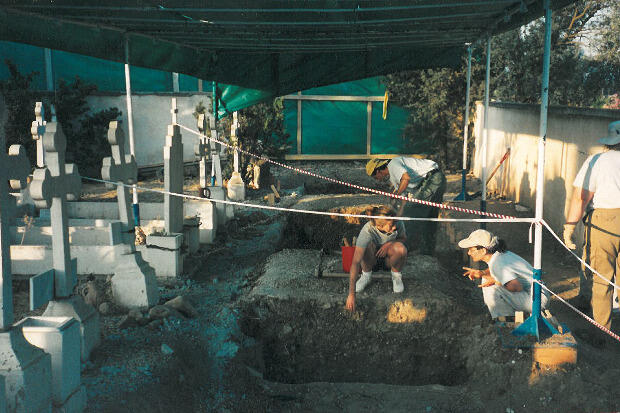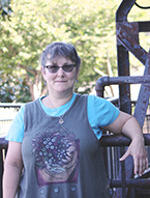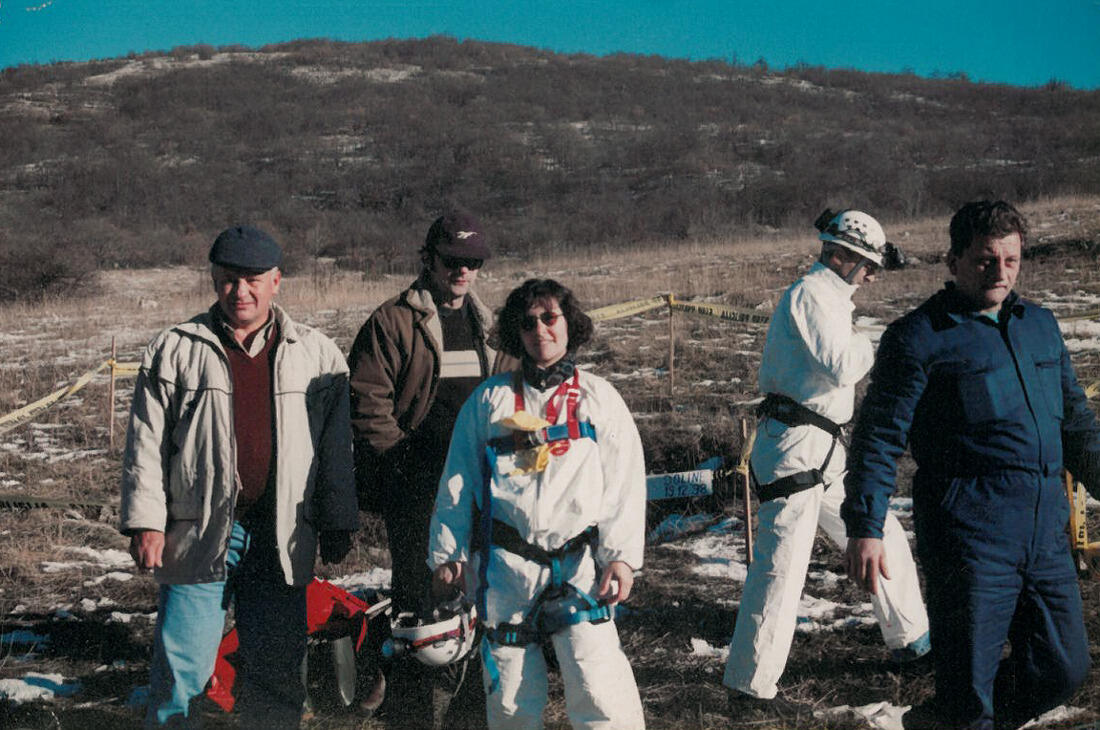
July 14, 2016
VCU forensic science expert helps Amnesty International investigate atrocities committed in South Sudan, Nigeria
Share this story

The photos and videos that arrived in Virginia Commonwealth University forensic science professor Tal Simmons’ email inbox depicted a horrific scene. Bleached white bones were scattered across a field, representing all that remained of several people murdered in South Sudan.
The images were sent by Amnesty International officials investigating and documenting atrocities committed in the country. As part of their investigation, they needed to know how long ago the remains had likely been dumped in the field.
Simmons, Ph.D., chair of the Department of Forensic Science in the College of Humanities and Sciences, is a forensic anthropologist and an expert in postmortem interval estimation — estimating time-since-death.
“They wanted to know, how long before the photos were taken did those individuals die?” Simmons said. “They had gathered some information and they wanted my estimation to check against, because they were investigating instances of wrongful death, where they have information that someone has committed a crime or atrocity but don’t have any means of verifying without having access to the underlying science.”
In her written report for Amnesty International, Simmons provided the investigators with the victims’ likely ages and sex.
And, with just a few clues — the whiteness of the bones, a black feather, local temperature data — Simmons was able to conclude that the victims could have died anywhere between two days and six weeks prior, but almost certainly died closer to two days, and that their remains had been scavenged by large vultures.
“There was clearly a lot of vulture scavenging. And, based on the literature about vultures – and those are smaller vultures than these, because the species in Sudan are huge – we know that they can completely skeletonize a body in less than 48 hours,” she said. “So I told Amnesty that it was possible they had only been dead for two days, because these [remains] were pretty much picked clean.”
Corroborating eyewitness testimony
Amnesty International is a global human rights watchdog that documents violations globally. The organization linked up with Simmons earlier this year via the American Association for the Advancement of Science as part of a program that helps nongovernmental organizations find expert scientists.
Christoph Koettl, a senior analyst with Amnesty International, said Simmons’ help so far has been invaluable.
Her analysis of time and cause of death in cases related to Nigeria and South Sudan proved crucial in corroborating testimony and strengthening our research.
“Our researchers operate in some of the most remote areas of the world to uncover otherwise hidden atrocities and subsequently mobilize our membership worldwide,” Koettl said. “The stronger our reporting is, the better we can rally the public and influence decision-makers.”
“We aim to not only collect eyewitness testimony, which of course is crucial, but also seek to deploy science and technology to build the strongest case possible,” Koettl said. “It is in this context that we reached out to Tal Simmons to help us analyze photographs of bodies collected by us in the field. Her analysis of time and cause of death in cases related to Nigeria and South Sudan proved crucial in corroborating testimony and strengthening our research. Simply put, it becomes more difficult for perpetrators to dismiss our findings.”
After serving as a consultant in the South Sudan case, Amnesty International tapped Simmons again this spring for two additional atrocities committed in Nigeria.
In one, the photos showed a number of bodies that had been dumped in a clearing.
“I didn’t know anything about these bodies when I saw them,” Simmons said. “[Amnesty International officials] were concerned that the bodies had been preserved in some way before they were dumped. I didn’t think that was necessarily the case, but one body with strange markings on it suggested that it had definitely been moved after having been stored for some time in a different position.”
In her report, Simmons concluded that the victims could have been dead for 10 days, corroborating Amnesty International’s investigation.
In the other case, the series of images sent from Amnesty showed many bodies, including children, who were suspected of being held in Nigerian military detention and having died of starvation, disease and neglect.
“[Amnesty International was] trying to publicize the illegal detention and the deplorable conditions under which these people were being held,” Simmons said. “They had died very, very recently. I said that they’d died within 24 hours.”
In Amnesty International’s May 11 report on the case, the organization revealed that 11 children under the age of 6, including four babies, were among 149 people who had died in 2016 following their detention in the notorious Giwa barracks detention center in Maiduguri, Nigeria.
History of service in conflict zones

Simmons has been working at the intersection of forensic science and atrocities since 1997, when she led the Physicians for Human Rights’ forensic monitoring project in Bosnia, a role in which she trained pathologists and crime scene investigation departments in the former Yugoslavia how to deal with skeletal remains — basic techniques of age, sex and stature estimation and identification of trauma.
Simmons has also served as the laboratory director for Physicians for Human Rights’ Cyprus Project and again as a consultant for the organization in Sri Lanka, helping to analyze skeletal remains for identification and signs of torture and other trauma.
Her other work includes being the senior forensic consultant for the Organization for Security and Cooperation in Europe in Pristina and Orahovac, Kosovo, setting up systems to identify human remains and helping establish policies for reburial.
More recently, Simmons worked as a consultant to the International Committee of the Red Cross to help develop postmortem database mortuary forms.
“I am so glad to be able to be involved with this work again,” Simmons said. “This is the thing that I like the best about what I do. If I can help Amnesty International out in some way with what they’re doing, then I’m thrilled.”
Looking ahead
In the months ahead, Simmons will continue assisting Amnesty International in its work to investigate and document atrocities.
This summer, for example, Simmons is designing a laminated card with a scale and a north arrow, and instructions on the reverse side to help Amnesty officials in the field take better photographs at crime scenes.
She also recently gave a presentation via Skype with Amnesty International’s Crisis Team members to offer tips on how to discretely search for and map out possible mass grave sites.
“I feel like I have a pretty good understanding of what they need to do their job, because I have done that job,” Simmons said. “I’m not going to suggest something that is expensive or beyond somebody’s area of expertise, or that would require them to ship an expert there or require a huge piece of kit, which might be obvious and detrimental to the work. Having an appreciation of how to do it without all of that is a good thing.”
Simmons and Amnesty International are also looking into the possibility of partnering on a grant project to hold a training exercise in-country for the investigators.
“Looking forward, we are working with Professor Simmons to refine our field documentation of scenes of atrocities in order to make the materials more useful for later expert analysis,” Koettl said. “This will ensure that we can take even more advantage of the expertise of her and others in this field.”
Subscribe for free to the weekly VCU News email newsletter at http://newsletter.news.vcu.edu/ and receive a selection of stories, videos, photos, news clips and event listings in your inbox every Thursday.
Subscribe to VCU News
Subscribe to VCU News at newsletter.vcu.edu and receive a selection of stories, videos, photos, news clips and event listings in your inbox.












